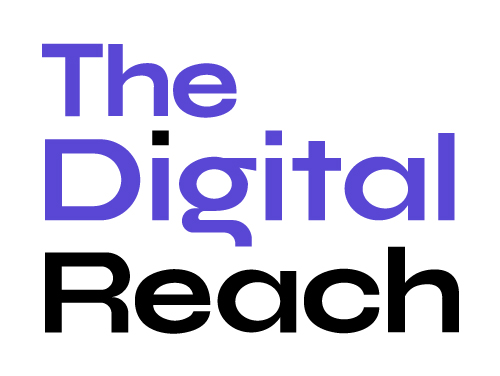In the ever-evolving digital landscape, the insurance industry is experiencing transformational shifts due to the advent of advanced AI, ML, Big Data, IoT, automation, and enhanced data analytics capabilities. Due to digital acceleration, customer preferences have evolved significantly, requiring more streamlined and hyper-personalized products and services.
By optimizing the InsurTech ecosystem through partnerships, incumbents can evolve and leverage advanced technologies to build innovative products and services while staying competitive. Moreover, the InsurTech ecosystem ensures that customers are empowered with the right products at the right time, delivering significant value to customers.
The key goal of the InsurTech ecosystem is to facilitate insurers’ ability to provide faster, more efficient, and cost-efficient solutions to customers and optimize modern solutions to give business-critical remodeling to the insurance industry. This blog post delves into the key benefits of the InsurTech ecosystem for delivering optimized customer experiences.
Main Advantages of InsurTech Ecosystem to Provide Optimized Customer Experiences
Ecosystems are environments in which companies collaborate to achieve predetermined goals and rely on each other to thrive. In an InsurTech ecosystem, different players, including traditional insurance companies, InsurTech startups, technology providers, and other players like telematics companies, come into a system.
Typically, one partner holds the lead position here, providing the critical platform core capabilities. At the same time, the other players provide support with add-on features and functionalities to design innovative insurance products and services. The ultimate goal of this ecosystem is to disrupt existing markets and develop novel insurance products and services that optimize customer experiences.
So, let’s take a quick look at the three key benefits of the InsurTech ecosystem for fostering CX in the insurance industry below:
- Enhanced Customer Engagement and Improved Agility in Operations: In current times, customers across the globe have become digitally savvy and more informed. They research different products and services on the market and require immediate and personalized results, leading to the need to disrupt the insurance industry with an InsurTech ecosystem that leverages advanced technologies to build ingenious products and services.
By optimizing the InsurTech ecosystem, there can be substantial innovation in the insurance industry. As a result, insurers can reap the benefits of partnering with InsurTechs in a successful ecosystem that helps to build novel products and services faster and more efficiently. It can help engage customers more effectively by delivering hyper-personalized products and services, optimizing back-end processes, and accelerating time-to-market.
The InsurTech ecosystem enables insurance companies to optimize customer-centric technology, which supports providing more specialized and efficient solutions to customers with agile operations. It implies that customer needs can be met faster within an ecosystem that supports all advanced technology setups and results in improving overall customer experiences. - Optimizing Scale by Leveraging Digital Acceleration: It is a fact that, for years, traditional insurance companies have struggled with the challenges of legacy systems and failed to meet customer needs. They need to stay in the market and leverage the potential of the InsurTech solutions, but it is possible when they digitize their core operations by optimizing their legacy systems with the adoption of Software-as-a-Service, popularly termed SAAS.
By seamlessly enabling this transformation, InsurTech solutions can empower traditional insurers to make a progressive shift towards modern systems. When the legacy systems are modernized, the insurers can align with the InsurTech ecosystem and optimize the potential of transformative technologies like artificial intelligence, machine learning, Big data, IoT, and data analytics.
Additionally, they can leapfrog digitization by shifting their processes and data into the cloud. It empowers them to not only mitigate the risk of digitizing their key processes but also streamline the value generation from the adoption of digital. Therefore, by leveraging digital technologies, insurers can scale their operations, modernize the insurance architecture, and benefit from the InsurTech ecosystem to build competitive insurance products and services. - A Dynamic Ecosystem Focusing on Prevention Rather than Protection: With a paradigm shift in the insurance industry, each player in the ecosystem understands the relevance of shifting focus from protection to prevention. With the adoption of transformative technologies, ecosystem players now have access to real-time data-backed insights about customers, market scenarios, and trends, making it possible to concentrate on preventive analysis rather than problem-solving.
Digital adoption has empowered players in the ecosystem to capture and analyze the data and comprehend it effectively to understand what problems customers face and create innovative products to help them counter those challenges. But using predictive analytics, the players in the InsurTech ecosystem can empower customers to mitigate those possibilities with risk mitigation strategies and deliver insurance policies that can adjust coverage based on real-time insights.
For example, preventive measures enable InsurTech solutions to identify potential health risks for a patient that are communicated, and the customer is connected to a health program to avoid the health risk proactively.
Conclusion
To conclude, the insurance industry is experiencing enormous, monumental shifts due to enhanced digitization and evolving customer needs. The InsurTech ecosystem empowers healthy ecosystem partnerships within InsurTech companies, insurers, and technology providers to accelerate the process of building novel insurance products and services that are hyper-personalized and delivered swiftly to customers. There is a need to leverage a clear vision, strategic thinking, and a proactive approach to make an ecosystem successful.

Manpreet Kaur is a Content Specialist with 12+ years of experience creating impactful B2B and B2C content across industries. Her expertise includes SEO, content strategy, and storytelling, with work featured on Business Insider, DZone, and CIO. She excels in crafting high-quality, multi-channel content that drives engagement, builds authority, and delivers results.





